Scientists have been searching for new alternative fuels to fight climate change for decades now. These include gaseous fuels such as hydrogen, natural gas, and propane; alcohols such as ethanol, methanol, and butanol; vegetable and waste-derived oils; and electricity.
Alternative fuels generally produce fewer emissions that contribute to smog, air pollution, and global warming and they are not derived from finite fossil fuel resources. In a society in which climate change is at stake, alternative fuels can help any nation become more energy independent.
The US Energy Policy Act of 1992 identified eight alternative fuels. Some are already widely used, while others are more experimental or not yet available. All have potential as full or partial alternatives to gasoline and diesel.

Ethanol as alternative fuel
Ethanol is made from alcohol. It is made through the fermentation and distillation of crops such as corn, barley or wheat. It can be mixed with gasoline by increasing octane levels and improving the quality of emissions.
Researchers uncovered the bioethanol breakthrough after 15 years of R&D in MicroBioGen’s Sydney labs. MicroBioGen CEO Geoff Bell said that “For the first time ever, a single yeast strain – optimised using our proprietary tech – can produce both clean fuel and food from non-food biomass”. The technology was developed in collaboration with Novozymes and was funded in part with a $4M grant from the Australian Renewable Energy Agency.
British startup Biofuel Evolution introduces BeBlock, an in-situ system that produces low-carbon bioethanol out of households, agricultural, and commercial food waste. They plan to implement peer-to-peer (p2p) bioethanol networks using blockchain technology.
The downside is that ethanol subsidies have a negative impact on the food processes and availability.
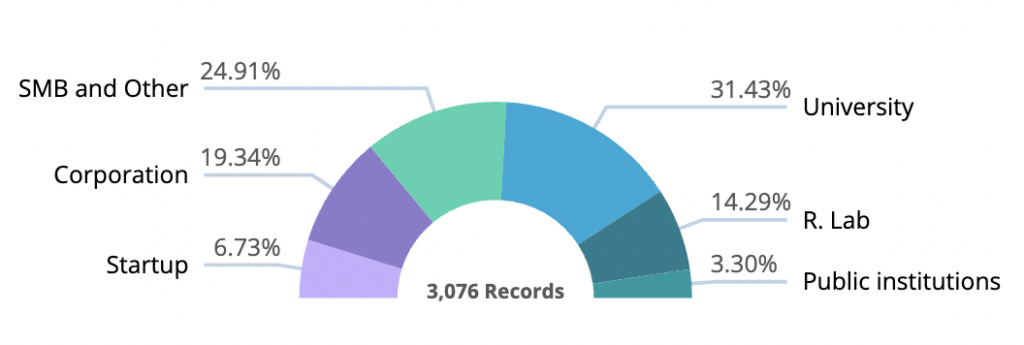
Natural gas
Natural gas burns cleaner and is now fully available to people in many countries through public services, which they provide to homes and businesses. It can also be used in vehicles producing much less harmful emissions than gasoline or diesel.
Workrise, once known as RigUp, has built a workforce management platform for the skilled trades, it has raised $300 million in a Series E round led by U.K.-based Baillie Gifford that values the company at $2.9 billion.
Since then, Workrise has broadened its reach to include wind, solar, commercial construction and defense industries. In a nutshell, it connects skilled laborers with infrastructure and energy companies looking to staff and manage projects efficiently. Workrise’s online platform matches workers with over 500 companies in its network, manages payroll and benefits and provides access to training.
The downside is that natural gas production creates methane, a greenhouse gas that is 21 times worse for global warming than CO2.
Electricity as alternative fuel
Electricity can be used for electric vehicles and battery-powered fuel cells. These fuel cells produce electricity without combustion or pollution.
Octopus Energy develops cloud-based smart grid platform and provides fair prices forever and greener energy from the UK’s largest investor in solar generation. It uses an innovative AI and data-based platform to balance loads around the grid.
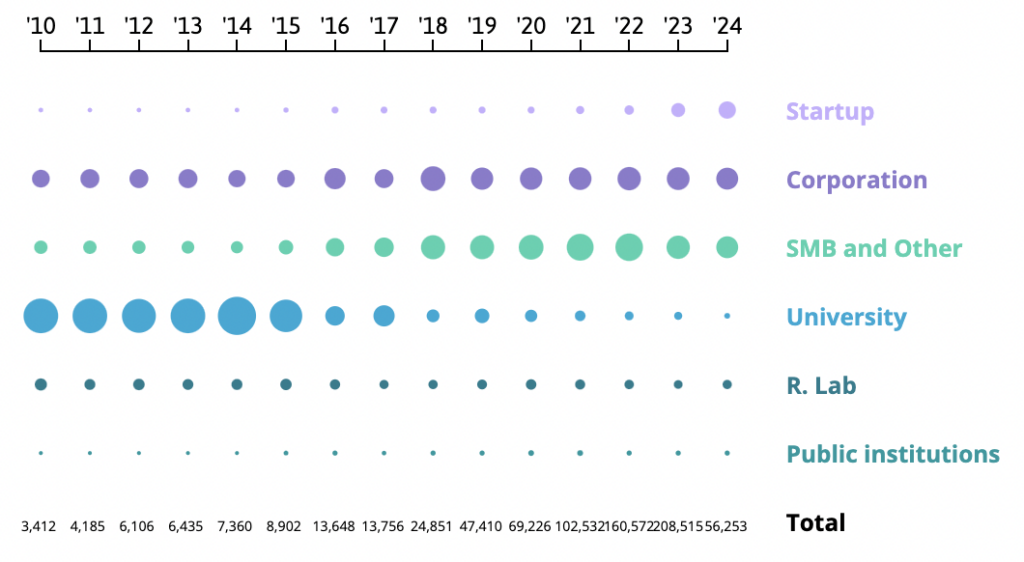
The fast-growing energy supplier hopes to grow its international business to create 50 million Octopus Energy customers by 2027, and plans to increase its new renewables division to generate as much clean electricity as it sells.
Octopus Energy last year achieved double “unicorn status” – a term used to describe young startup companies worth at least $1bn –after investors valued the company at more than $2bn, just five years after it began supplying gas and electricity. The downside is that a lot of electricity is generated from coal or natural gas, leaving a carbon footprint.
Hydrogen
Hydrogen can be mixed with natural gas for certain types of internal combustion engines. It is also used in fuel cell vehicles that run on electricity produced by the electrochemical reaction between hydrogen and oxygen.
The cost is very high, and there is also a lack of necessary infrastructure.
Researchers from The University of Texas at Austin have found a low-cost way to solve one half of the equation, using sunlight to efficiently split off oxygen molecules from water. The finding represents a step forward toward greater adoption of hydrogen as a key part of our energy infrastructure. The team has filed a provisional patent application to commercialize the technology.
Propane
Propane, also called liquefied petroleum gas or LPG, is a by-product of natural gas processing and crude oil refining. It produces fewer emissions than gasoline, and there is also a highly developed infrastructure for transportation, storage, and distribution.
But the production of natural gas creates methane, which contributes to the greenhouse effect, as we mentioned before.
Biodiesel as alternative fuel
Biodiesel is based on vegetable oils or animal fats, even recycled after restaurants have used them. Biodiesel is safe, biodegradable, and reduces air pollutants associated with vehicle emissions such as particulate matter, carbon monoxide, and hydrocarbons.
The Directorate General for Research and Innovation of the European Commission launches three joint research and innovation projects in the area of advanced biofuels and alternative renewable fuels. The projects arise from a call supported by the EU together with the Government of Japan, represented by the Ministry of Education, Culture, Sports, Science and Technology (MEXT). It is part of the EU-Japan Scientific and Technological Cooperation Agreement. The three projects receive a total of € 10.7 million: € 9.5 million from Horizon 2020, the EU research and innovation framework program (2014-2020) and approximately € 1.2 million from the International Collaborative Research Program Strategy of Japan (SICORP) dependent on the Japan Science and Technology Agency.
However, there is still a limited infrastructure for both its production and distribution.
Methanol
Methanol, also known as wood alcohol, can be used for flex-fuel vehicles designed to run on M85 percent methanol and 15 percent gasoline. Methanol could become an important fuel in the future as it could become a source of hydrogen needed for fuel cell electric vehicles.
Iberdrola and Foresa analyse the development of investments in renewable hydrogen for the industrial production of green methanol in Galicia. Both companies could tackle the construction of a 20 MW green hydrogen plant – expandable to 200 MW – obtained by electrolysis with renewable energy, as well as the installation of equipment to capture CO2 from biomass combustion plants, therefore increasing its already important carbon capture character.
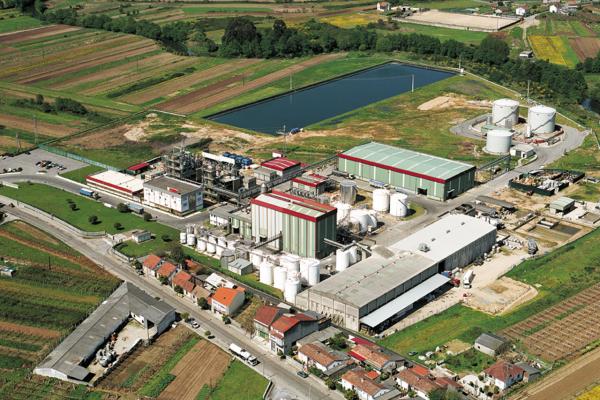
The projects will be co-located at Foresa’s plants in Galicia, and the initial investment – which is eligible for Next Generation EU funds – would exceed 82 million euros; a volume that could reach 400 million if planned expansions are undertaken. In the first phase, green methanol production of 10,000 tn/year would be achieved, which could be scaled up to 100,000 tn/year, therefore preventing the emission of 470,000 tn/year of CO2.
Today, automakers no longer make methanol-fueled vehicles.
P series fuels
They are a mixture of ethanol, natural gas, and methyltetrahydrofuran (MeTHF), a solvent derived from biomass. They are a clean, high-octane alternative that can be used in flex-fuel vehicles, alone or mixed with gasoline in any ratio.
Room for innovation
Fuel alternatives play a key role against climate change so there is still much to be done in this field. The combination of topics: “alternative fuels” and “climate change” is growing in activity as shown in Linknovate’s graph below: the subject has grown incredibly in the last 3 years:
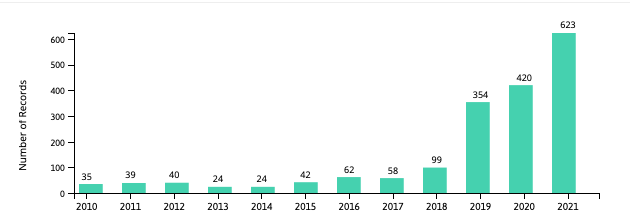
Other relevant keywords when discussing Alternative Fuel, are Electric Vehicles, Sustainable Aviation and Renewable Energy as shown in the word cloud below. Our AI technology generates this foam tree by detecting the words that are most mentioned in the majority of records. This helps our users detect new opportunities and improve their innovation scouting searches. If you would like to find out more about our platform, book a demo here.
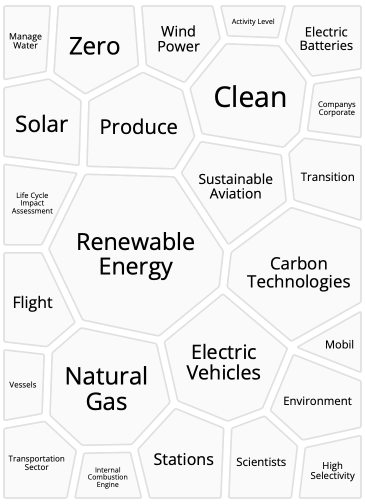
Carbon Zero
The UN has warned that, in addition to cutting emissions, we should remove billions of tonnes from the atmosphere every year for the next few decades by absorbing or sequestering it.
An increasing number of start-ups trying to offer different solutions to reduce our carbon footprint have born in recent years, but now we can also detect an increase in companies and research teams that investigate carbon capture, with the objective of ideating systems capable of absorbing and storage the greenhouse gases that are generated from industrial production.
This, of course, could turn into a double-edged sword, since similar innovations, while representing a powerful tool against climate change, could also lead companies and governments to lower their efforts towards cutting emissions due to the presence of a technology that could reabsorb them.
Moreover, although innovation is continuously developing on the field, The UN points out that Zero greenhouse emissions will be impossible to reach. This is due to different reasons, which include:
- The presence of numerous industries without carbon-free technologies available, such as aviation or steel;
- The fact that carbon is not the only problem: other greenhouse gases, such as methane or nitrous oxide from livestock and fertilizers, also contribute to global warming and, in addition, are more difficult to capture than carbon;
- The fact that the actual warming limit target of 1.5º, as stipulated in the Paris Agreement, is very likely to be exceeded in the near future;
- The uncertainty of predictive models: for now, we don’t know exactly how sensitive the climate is to increasing levels of greenhouse gases.

Innovations related to the for the removal or reabsorption of gases do not represent the only answer to the increasing pollution levels and global warming, but will certainly represent a necessary tool to keep temperatures under control.





